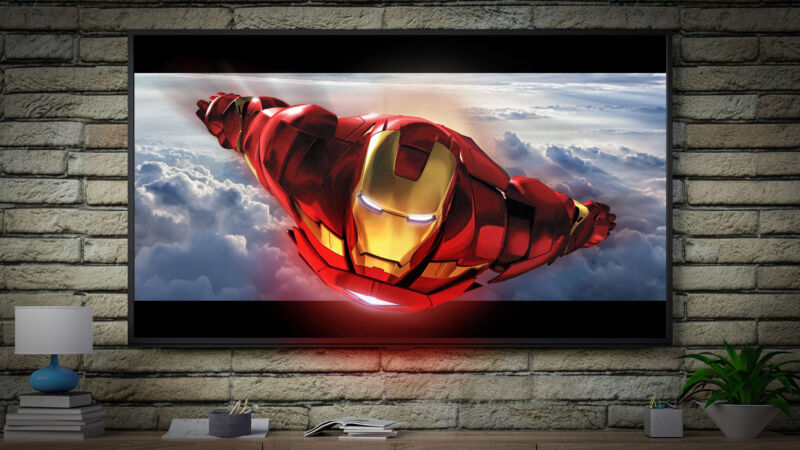
/ Why limit yourself to a 21:9 ratio when select Marvel Studios films were framed (at least in part) in the taller IMAX Digital format? Get ready to see the difference thanks to this week’s Disney+ update.
Aurich Lawson | Getty Images | Disney
Disney+’s next major app update, coming to all devices later this week, continues the service’s latest efforts to please nitpicky A/V obsessors with a new screen ratio format meant to fill more of your HDTV screen in a way that filmmakers originally intended.
“IMAX Digital” is coming to all devices that support Disney+ starting this Friday as part of the service’s “Disney+ Day” promotion. This “17.1:9” format will land exclusively on 13 Marvel Studios films to start, and the move coincides with the streaming premiere of
Shang-Chi and the Legend of the Ten Rings—a film that skipped Disney’s experiment with
simultaneous launches in theaters and on Disney+ earlier this year.
Here’s the full list of IMAX Digital-compatible films coming to Disney+ later this week:
- Ant-Man and the Wasp
- Avengers: Endgame
- Avengers: Infinity War
- Black Panther
- Black Widow
- Captain America: Civil War
- Captain Marvel
- Doctor Strange
- Guardians of the Galaxy
- Guardians of the Galaxy Vol. 2
- Iron Man
- Shang-Chi and the Legend of the Ten Rings
- Thor: Ragnarok
When a film switches to an IMAX Digital ratio, the usual black bars that signify a wider-screen 21:9 ratio will be reduced, adding approximately 26 percent more image to your HDTV, all framed as originally intended.
A quick “lie-max” primer
Anyone who appreciates film aspect ratios may immediately raise an eyebrow upon seeing the words “IMAX Digital,” which is not the same as IMAX’s original 1.43:1 ratio. IMAX’s first format debuted in the 1970s with designs on projecting its 70 mm reels on larger, square-ratio screens. The corporation’s move toward more average multiplex theaters included a shift in the 2000s to the wider IMAX Digital format, but this tactic failed, as viewers could see the difference between the 2K digital projections and the original format’s pristine 70 mm foundation.
As a result, moviegoers began using the phrase “lie-max” to refer to this newer format—and the higher ticket prices it commanded. (This sentiment showed up in a 2015 Ars comment section about
the IMAX Corporation threatening legal action over its trademark.)
Still, the Marvel Cinematic Universe began supporting IMAX Digital versions with 2014’s Guardians of the Galaxy. This was primarily thanks to that era’s obsession with 3D projection, which IMAX Digital played nicely with. And at first, the format was used only in select action sequences as opposed to entire films. Disney has confirmed that many of the supported films include these 17.1:9 sequences, with the rest of their runtimes sticking with cinematic 21:9 ratios (and thus larger black bars on an average 16:9 TV). The same goes for 2008’s Iron Man, which got an IMAX Digital theatrical re-release despite not being filmed in the format. (It’s unclear whether that film’s limited IMAX Digital support was due to it being originally filmed in “open matte” format, to be manually cropped by editors before its final theatrical aspect ratio was locked down.)
Up until this week, if you wanted to see those sequences in their intended viewing ratios—or entire films, in the case of later MCU entries like Avengers Infinity War and Endgame—you needed a 3D TV and a 3D Blu-ray player. This week’s update cuts that limitation and will lead to smaller black bars on the top and bottom of their Disney+ versions by default. The app will provide an option to revert the films to their previous 21:9 version if desired.
This week’s news follows Disney+’s decision to update its entire library of
Simpsons episodes in May 2020 to
support their originally televised 4:3 ratios—and thus restore visual gags that were otherwise lost to Disney+’s original 16:9 widescreen crop. If you’re looking for a streaming service that reveres the original 1.43:1 IMAX aspect ratio, your best option is HBO Max, which presented the
Justice League Snyder Cut earlier this year as its director intended.